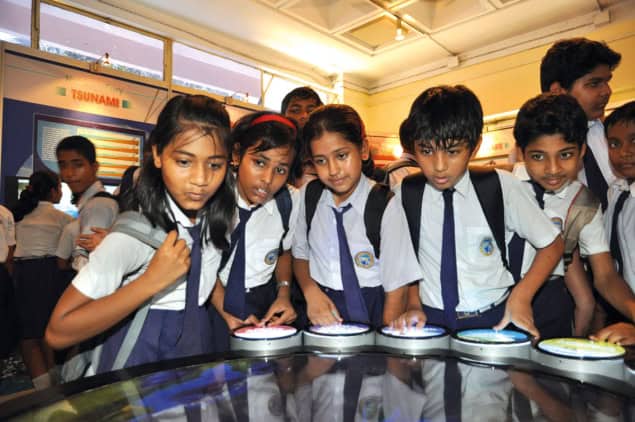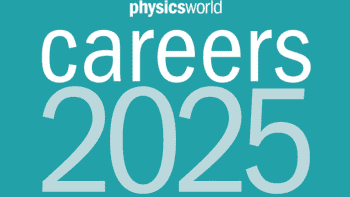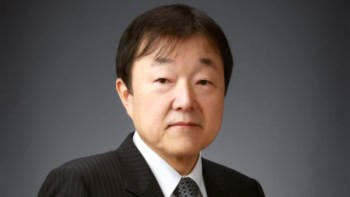While India boasts some world-leading research institutes, more needs to be done to bolster universities to attract the next generation, as T V Padma finds out

In the euphoria of India’s independence in 1947, the country’s first Prime Minister Jawaharlal Nehru described its national laboratories as “temples of modern India”. These national institutes have for decades played a key role in India’s progress in science and technology by carrying out basic science research often of world-leading quality. The Tata Institute of Fundamental Research in Mumbai, for example, was built to kick-start Indian research in the aftermath of the Second World War.
Yet what Nehru and other Indian leaders since him have neglected, however, is to support the nurseries that train budding young scientists to go and work at such “temples”. Except for a few pockets of excellence, university science education in India is in the doldrums. The result is that Indian universities are now the poor cousins of elite, national research institutes when it comes to receiving government funds and in infrastructure.
The Indian university system comprises a mix of public- and private-funded universities plus single institutions that are autonomous but not allowed to have off-campus colleges. The latter are dubbed “deemed” universities and the Indian Institute of Science (IIS) in Bangalore, for example, is one. According to India’s University Grants Commission, there are now an estimated 45 national universities, 320 state universities, 130 deemed universities together with 189 private universities.
It is the publicly funded universities that form the backbone of India’s higher education, but they have endemic problems ranging from poor funding and neglected buildings to a lack of staff and equipment, too much red tape and political influences in some university appointments. But what holds such universities back the most is that funding and research focus is so skewed in favour of the national institutes. This leaves most public-funded universities, except a few such as those in Delhi, Jammu, Kolkata and Punjab, unable to engage in quality research. “Isolated cases of academic excellence are not enough,” says Sunil Mukhi, chair of the physics programme at the Indian Institute of Science Education and Research (IISER), Pune. “You need them across the country.”
Divides and divorces
State universities in India mostly offer students three-year undergraduate degrees that are done in “colleges” and two-year postgraduate degrees that they carry out in university departments. What this means is that most undergraduate lecturers at public-funded universities do not carry out any research as they are forced to spend all of their time teaching – only those who teach postgraduate students can engage in research, as at Delhi University. Elite institutions such as the IIS in Bangalore, on the other hand, run degrees that do offer a year of hands-on research experience. “It is a very big gap and an artificial divide,” says physicist Vikram Vyas of St Stephens College, which is Delhi University’s top-ranked undergraduate college.
There is a feeling, however, that if those who teach undergraduates also did research, it could benefit their teaching. “These lecturers could then point out the messy areas at the frontiers, where knowledge is still evolving, and where there are unsolved problems and unanswered questions with no clear answers,” says Vyas. “I believe that the absence of this perspective in undergraduate teaching is one of the main reasons for the paucity of original ideas in science” Vyas adds that India needs to rethink its university system so that every teacher in an undergraduate college is associated with the corresponding research department in the university. Similarly, every faculty member in the main department should be associated with an undergraduate college. “This is possible only if we have many more smaller and compact universities,” he says.
However, Sri Krishna Joshi of the National Physical Laboratory (NPL) in Delhi, and a former head of the Council of Scientific and Industrial Research, says that many state and central universities do not in fact distinguish between those who teach undergraduate and postgraduate courses. Institutions like Delhi University are an exception, not the rule, according to Joshi, a former member of India’s University Grants Commission that funds public universities. The main issue, he says, is rather the quality of physics teachers in state universities. Such staff are responsible for teaching more than four-fifths of India’s postgraduate physics students and even higher numbers of undergraduate students (see box below). “On both counts, nearly all state universities, barring a few, and even some central universities are not doing well,” Joshi says.
Whatever the causes, the bottom line is that physics students in India are by and large disconnected from top-class research and researchers. Indeed, Joshi goes as far as saying that there is a “total divorce” between teaching and research outside the country’s elite institutions such as the Indian Institutes of Technology, the IISERs or some central universities where teachers are appointed after taking their research contributions into account.
Another problem at non-elite institutions is the often outdated nature of the syllabus itself. Joshi says that universities often follow a syllabus that may not have changed much over the years or even have been decided by India’s leading physicists. “The syllabus does not offer students the scope to know the latest trends in the field or be exposed to emerging inter-disciplinary areas of research,” he says.
The physics syllabi for undergraduate courses are often based on broad guidelines and updating them is time-consuming, complicated and often involves bitter wrangles. They also do not give undergraduate physics students problem-solving skills but rather only encourage derivations to be memorized. Grants to buy laboratory equipment are based on a decades-old syllabus, which leaves little or no scope for colleges to devise new teaching and experimental projects in tune with recent advances in a field.
Infrastructure woes
The poor condition of laboratories in most state universities is a big problem in the declining quality of university physics education in India. Unlike national research institutes, where funds for costly, hi-tech equipment are more readily available, most state universities have to go with a begging bowl for funds. “Even to buy a simple thing like a laptop, not to speak of equipment, we face delays and difficulties,” complains Amitava Raychaudhuri, a physicist at Calcutta University. “Departments in state universities are so cash-strapped that they cannot get modern laboratories or equipment. Students make do with aging equipment.”
Even if money is forthcoming, delays and red tape can be an issue. Unlike research institutes that receive research project funds direct from the government, universities depend on funds from national funding agencies. Unfortunately, India’s funding agencies are slow moving and the money can arrive months after a university department has had a project sanctioned, according to Raychaudhuri, who insists that despite the problems his university still gets “extremely sharp, intelligent and motivated students”.
What is more, as grant money is handed out towards the end of a financial year, undergraduate colleges end up buying equipment or software towards the end of the teaching year. So even if a university gets approval to buy something, any students whose semesters have already ended (or are about to end) lose out on learning how to work with the equipment. “Apart from administration and salary funding, there is not much available for development of infrastructure,” says Shobhit Mahajan, a physicist at Delhi University who teaches postgraduates and researchers. “Poor infrastructure and lack of opportunities is a major determinant.”
Back at the IISER in Pune, Mukhi suggests that the government should also periodically review universities through external committees, as is already done with the IISERs. “Reviews are an important tool to assess if universities are performing according to expectations,” adds Mukhi. He thinks that universities should not merely follow a textbook-bound approach, but encourage creative ideas and a research spirit in the classroom. “If we could do it in the five years since the IISERs were set up, the universities should be able to do it too.”
Reason for hope
One brief opportunity for students to learn directly from top researchers are summer camps and training programmes run by science academies, the Department of Science & Technology and the Council of Scientific and Industrial Research. Active researchers do most of the teaching, giving students first-hand experience about research. “Teaching should not be reduced to a blackboard exercise,” says physicist Anand Bharadvaja of the Bhaskaracharya College of Applied Sciences, one of the newer colleges run by the Delhi state government.
Another welcome step, says Bharadvaja, is Delhi University’s new initiative to encourage undergraduate teachers to carry out interdisciplinary and innovation-driven research. Bharadvaja’s team, for example, has collaborated with other scientists in a study on the potential of agricultural waste as an alternative source of energy. Some also see benefits to undergraduate students of universities that are engaged in international collaborations. “When they see hardware activities centred on the cutting-edge technology being done at their home institutions, they get enthused to take up challenging tasks in science and technology as a career option,” says Archana Sharma, an Indian physicist at CERN.
Things, however, might about to be turning out for the better, given that science minister Jitendra Singh announced in September that scientists from national institutes would be required to spend a few months teaching in universities. However, not everyone is convinced. “I don’t think that a handful of scientists from research institutes jet-setting to a university to deliver some lectures will make too much of a difference,” says Mahajan. “Unless they have a stake in the teaching per se, it will soon evolve into a chore that is performed for the sake of regulation.”
Filling the vacancies

One major problem for physics in India is that most universities, especially those that are state funded, have many job vacancies that they cannot fill. In the case of physics, around 30–40% of the faculty positions are lying vacant. “Universities are not able to hire people,” says Atul Gurtu, a former researcher at the Tata Institute of Fundamental Research in Mumbai. “It is very frustrating.”
What this means is that physics and other sciences are therefore mostly taught by ad hoc teachers who are not well paid and who face an uncertain future, including candidates with just a Master’s degree and no research track record. Despite their lack of experience, if such appointees continue for several years, they are eventually appointed as regular teachers. “This is doing a lot of damage to science education in general, including physics education,” says Sri Krishna Joshi of the National Physical Laboratory in Delhi.
To make matters worse, advertisements for faculty positions are often not well publicized to attract the best talent. Even if top people are interested in the positions, they have to battle through university red tape before they can start work. At the University of Calcutta, for example, it may take up to two years between the advertisement of a position and final recruitment. “By then, the best candidates would have a found a good job elsewhere,” says theoretical particle physicist Amitava Raychaudhuri of the University of Calcutta.
Another deterrent is the comparatively low salaries for state universities compared with central universities and national research institutes. Many say that political interference and corruption in university appointments, including even the vice-chancellor, is a common and serious problem across India. Unlike central universities, which usually boast a top-class academic as vice-chancellor, the bosses at state universities are often political appointees. “In India, state governments are like parasites, using state universities to wield clout but not rewarding academic performance,” says Raychaudhuri. “This is demoralizing to the state universities and political appointments are destroying universities.”



